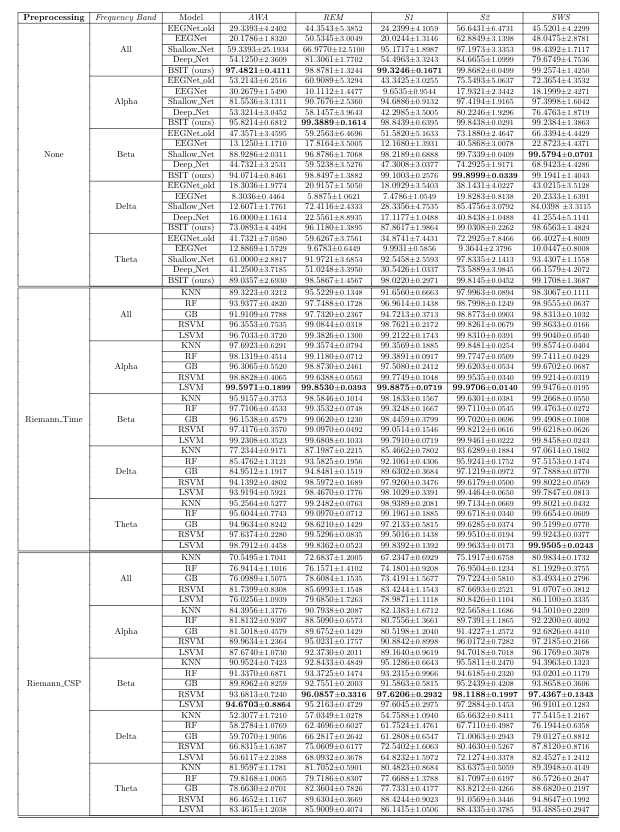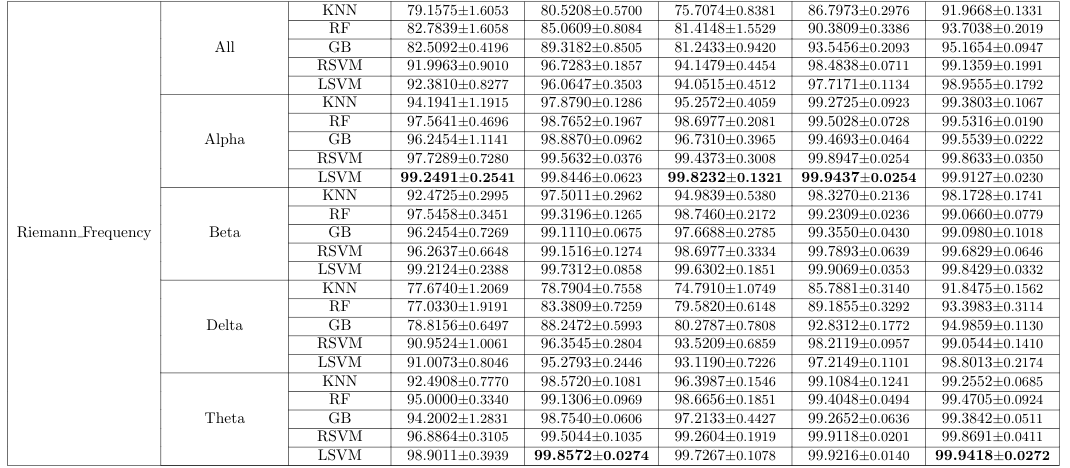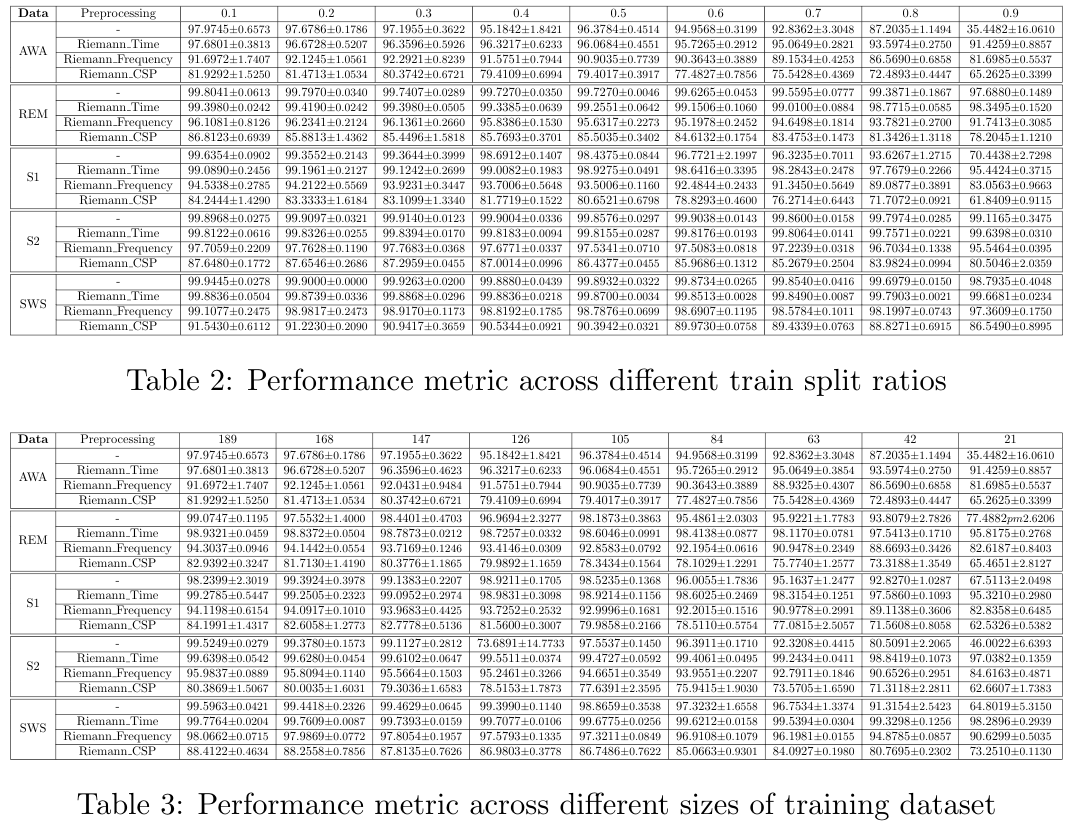The code repository for the project - Brain Based Subject Identification. This work was performed during my internship at Universty of Montreal under Projessor Jerbi. The major contributions of this work are as follows:
- We reproduce works such as EEGNet, EEGNet_Old, DeepConvNet and ShallowConvNet as well as our very own architecture called BSIT.
- We test the performance of these deep learning models without any preprocessing on various datasets, including AWA, REM, S1, S2 and SWS and also at different frequency ranges, Alpha, Beta, Delta, Theta and All.
- We also test ML models such as K-Nearest Neighbors, Random Forest, Gradient Boosting, and Support Vector Machines (with Radial and Linear kernel functions) on the same datasets with a domain-induced pre-processing. (Riemann Time, Riemann Frequency and Riemann CSP).
- We also test these models against there train-split ratio to induce the minimum amount of data needed for the model to make sound results.
- The novelty of this repository is its extension to evaluate the attribution problem for subject identification. We study various attribution methods such as- Analyzing activations, and Deep dream.
- Furthermore, we attempt to study the robustness of our models using intruder detection. The idea of the experiment is to hold out subjects during training and asking the model to predict whether the subject is an intruder or not. We do this using a confidence threshold, and visualize these results using the ROC curve as showed in
plots!
In this repo, we share our codes from our experiment settings for different sleep stages - AWA, REM, S1, S2 and SWS. The codes have been simplified and have been segregated based on the dataset, for easy use and understanding.
Although we were not able to push for a paper with this project, I believe we have shown that further study of this setting is warranted, and have provided ample results for attribution for brain-based subject identification.
- Python == 3.7 or 3.8
- tensorflow == 2.X (verified working with 2.0 - 2.3, both for CPU and GPU)
- mne >= 0.17.1
- PyRiemann >= 0.2.5
- scikit-learn >= 0.20.1
- matplotlib >= 2.2.3
- torch >= 1.4.0
All other results including activations, and performance metrics have been saved in plots.
I would like to thank Prof. Karim Jerbi for giving me the opportunity to work on this project.
If you use the EEGNet model in your research and found it helpful, please cite the following paper:
@article{Lawhern2018,
author={Vernon J Lawhern and Amelia J Solon and Nicholas R Waytowich and Stephen M Gordon and Chou P Hung and Brent J Lance},
title={EEGNet: a compact convolutional neural network for EEG-based brain–computer interfaces},
journal={Journal of Neural Engineering},
volume={15},
number={5},
pages={056013},
url={http://stacks.iop.org/1741-2552/15/i=5/a=056013},
year={2018}
}
Similarly, if you use the ShallowConvNet or DeepConvNet models and found them helpful, please cite the following paper:
@article{hbm23730,
author = {Schirrmeister Robin Tibor and
Springenberg Jost Tobias and
Fiederer Lukas Dominique Josef and
Glasstetter Martin and
Eggensperger Katharina and
Tangermann Michael and
Hutter Frank and
Burgard Wolfram and
Ball Tonio},
title = {Deep learning with convolutional neural networks for EEG decoding and visualization},
journal = {Human Brain Mapping},
volume = {38},
number = {11},
pages = {5391-5420},
keywords = {electroencephalography, EEG analysis, machine learning, end‐to‐end learning, brain–machine interface, brain–computer interface, model interpretability, brain mapping},
doi = {10.1002/hbm.23730},
url = {https://onlinelibrary.wiley.com/doi/abs/10.1002/hbm.23730}
}


